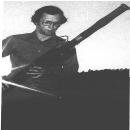Gemini VI was originally planned to launch on October 25, 1965. The mission, as originally envisaged, was to last two days, and be the first to feature the docking of two spacecraft. However, prior to the launch of Gemini, the Agena target vehicle, to which it was planned to dock, exploded after launch, which led to the mission having to be scrubbed.
In order to fulfil the objectives of Gemini VI, a new mission, Gemini VI-A, was planned that would see the flight launched just over a week after the launch of Gemini VII in December 1965. The new mission was planned to last just over one day, and would see Gemini VI-A undertake the first rendezvous in space with Gemini VII. Gemini VI-A was eventually launched on December 15, 1965, ten days before Christmas.
Following the success of the rendezvous with Gemini VII the previous day, prior to reentry, the crew of Gemini VI-A made a report of an object in a polar orbit travelling north to south moving to reenter the atmosphere. At this point, on the microphones in mission control came the sound of an eight-note Hohner "Little Lady" harmonica, played by commander Wally Schirra, accompanied by some small bells in the hands of pilot Tom Stafford, playing the Christmas song "Jingle Bells".
After the return of Gemini VI-A, the harmonica and bells played during the flight by Schirra and Stafford were donated to the Smithsonian in 1967. In 2005, Stafford gave an interview in which he spoke about the incident, stating that it had been Schirra's idea and had been kept a secret from everyone.
 https://airandspace.si.edu/stories/editorial/tom-staffords-jingle-bells-and-wally-schirras-harmonica
https://airandspace.si.edu/stories/editorial/tom-staffords-jingle-bells-and-wally-schirras-harmonica
 https://airandspace.si.edu/collection-objects/harmonica-gemini-6/nasm_A19670148000
https://airandspace.si.edu/collection-objects/harmonica-gemini-6/nasm_A19670148000
 https://airandspace.si.edu/collection-objects/bells-gemini-6/nasm_A19670148001
https://airandspace.si.edu/collection-objects/bells-gemini-6/nasm_A19670148001


